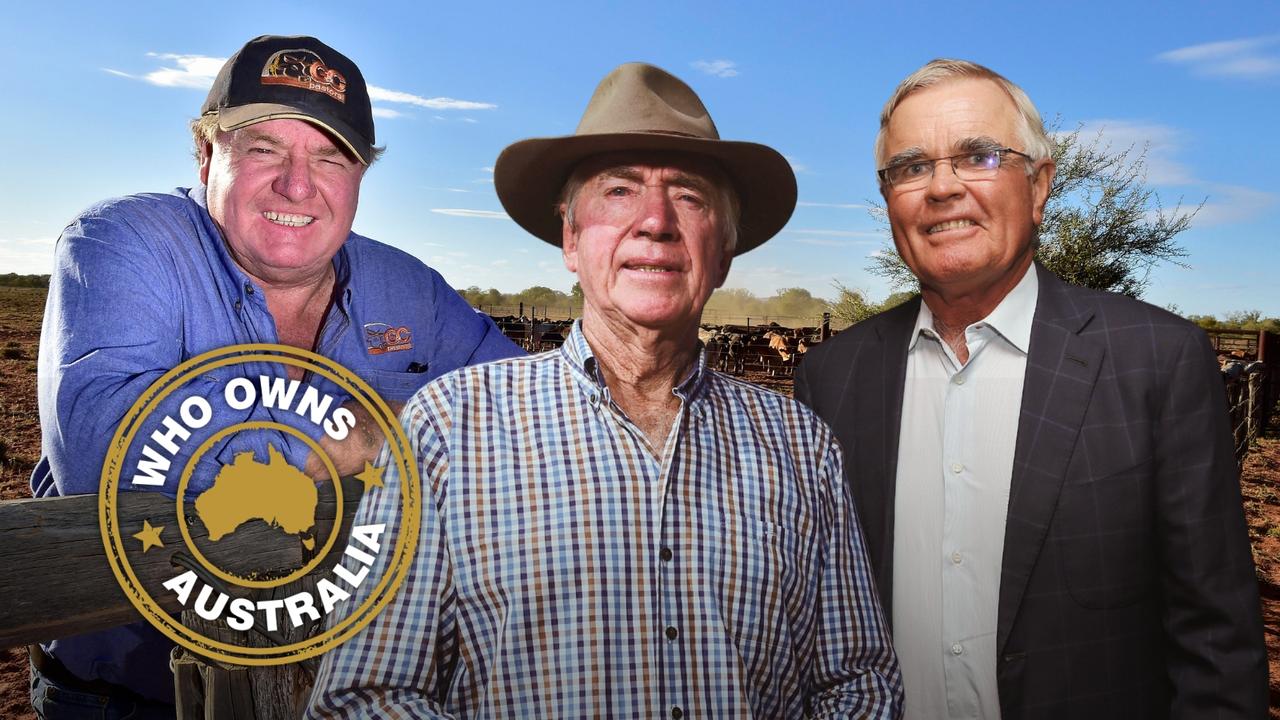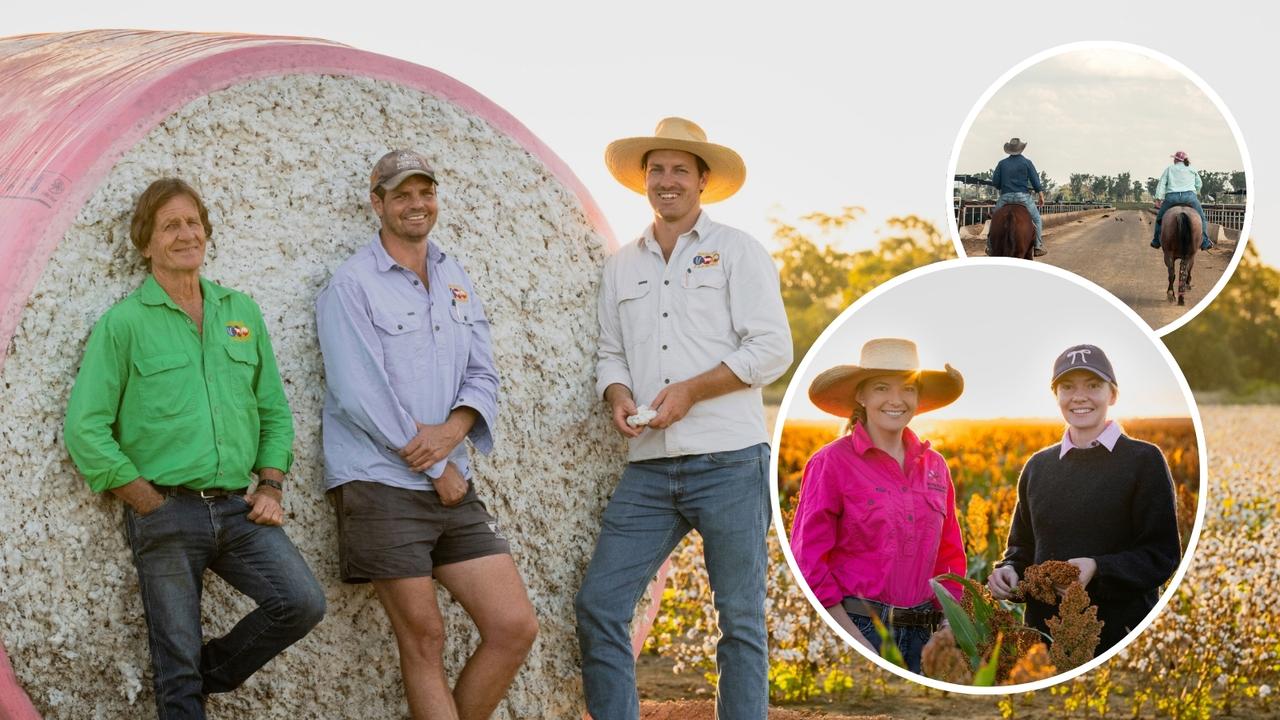How the Australian agriculture will become a $100 billion industry
Agriculture wants to be a $100 billion industry within 11 years, and this is how it aims to get there.

AUSTRALIAN agriculture stands at the crease, bat in hand, sleeves rolled up.
It’s hot, dusty and sweat streams down its face as the opposing quick bowler steams in. This is its moment of reckoning. It has always been a steady performer. Scores of 58 and 65 in recent years have secured its place in the team. But it needs to score 100 if it wants to be a champion. The coach demands it. The crowd screams for it. And, most importantly, its country needs it.
Australian agriculture wants to — needs to — “hit a ton”.
It may read like a Super Coach fantasy, but this is exactly where Australia’s agriculture sector finds itself.
Agriculture has set itself the ambitious target of being Australia’s next $100 billion sector, to put it on a par with heavy hitters such as mining and manufacturing.
And it wants to crack it by 2030, a mere 11 years away. Agriculture currently produces $58 billion of goods annually. To get to $100 billion will require an extra $40 billion on the sector’s bottom line. That would require doubling its current annual growth rate.
But what’s in a number? And can it hit a ton in such a short time, or will its middle stump be knocked out of the ground?
Australian agriculture contributes 3 per cent to Australia’s gross domestic product. In 2017, before the current drought hit, it was the fastest growing of all industries, with 16.3 per cent annual growth. That year, ag exports rose 20 per cent and employment growth increased 4.6 per cent. In recent years the value of Australian agricultural production has nearly doubled, from $36 billion in 2009 to a peak of $65 billion in 2017.
Booming populations and whopping growth in India and China are the big opportunities, as their economies unshackle themselves from rural poverty and develop more sophisticated consumer tastes and markets.
China is not just Australia’s biggest export customer — worth close to $14 billion in 2017-18 — but also its largest growth market. Exports to China are now about seven times larger than they were 20 years ago. And there are still big opportunities for wool, sheep meat, beef, wine and seafood.

Australian exporters are also tapping into India — which last year overtook China as the world’s fastest growing economy.
India is Australia’s fifth largest export market, with a hunger for agtech products and expertise, alongside demand for traditional commodities such as dairy, horticulture and wool.
National Farmers’ Federation president Fiona Simson insists the $100 billion target is “more than just a thought bubble”. The NFF’s 2030 Roadmap identifies five priorities essential to hitting the ton — customers and the value chain; sustainability; innovation; people and communities; and capital and risk management.
But the NFF makes it clear productivity growth alone will not be enough to reach its target. Simson says for agriculture to hit $100 billion “we need a shake-up”.
“A disruption to business as usual. The status quo just won’t get us there,” she says.
Government and industry have been road testing the $100 billion target to see if it is feasible. It reveals that under a business-as-usual scenario, where nothing changes, farmgate value in 2030 would be about $84.3 billion. How to capture that remaining $15.7 billion is the challenge.
Research organisation AgriFutures Australia points to productivity as “the key mechanism” for farmers to hit the ton. But there are hurdles such as international markets, environment, consumer preference, input prices and transport costs.
Australian Farm Institute executive officer Richard Heath says the $100 billion target is achievable if those hurdles can be leapt. “There’s going to have to be a lot of enabling infrastructure, a lot of investment and regulatory change, broader than farms just being more productive, that are going to be needed for the sector to continue to grow to $100 billion,” he says.
They are the ultimate odd couple, yet the “old” of carbon and the “new” of digital technology could together be the biggest factors in ag hitting $100 billion. In fact, digital innovation alone could provide enough boost to hit the target.
Richard Heath says digital technology could boost the value of Australian agriculture by a whopping 25 per cent. That’s a $20.3 billion boost to ag’s bottom line. The biggest gains would come from labour savings ($7.4 billion), genetic gains ($2.9 billion), tailoring of inputs to needs ($2.3 billion) and enhanced market access and biosecurity ($1b).
But it is no surprise that — remember, we are dealing with the bush — getting and staying “connected” is a major challenge to any digital revolution.
There is no such connectivity problem when it comes to carbon. Few farmers would say they are not seeing the effect of a changing climate. Agriculture has copped plenty of blame for the carbon increase in the atmosphere, from the emissions of belching livestock, to land clearing and increased cropping. Yet the NFF insists climate change is an opportunity rather than a threat.
While World Bank modelling says climate change will knock 2.7 per cent off future Australian agriculture yield, CSIRO says it could actually provide an extra $40 billion income to agriculture by 2050 through streams such as carbon sequestering and biodiversity stewardship programs.
The NFF vision is to make the agricultural value chain carbon neutral. Australia’s red meat sector has already committed to that goal by 2030. Meat and Livestock Australia is looking at how genetic selection could lower livestock emissions, and if a vaccine could cut methane production in the rumen.
Former MLA managing director Richard Norton, who set the ambitious target, says going carbon neutral would, “turn environmental criticism of the industry on its head”.
“These pathways don’t require the heavy hand of regulation,” Norton says. “What they do require is the commitment of industry, the right policy settings from federal and state governments, and a continued investment in research, development and adoption of innovation within industry.”
FARMERS TURN FOOD WASTE INTO OPPORTUNITY


